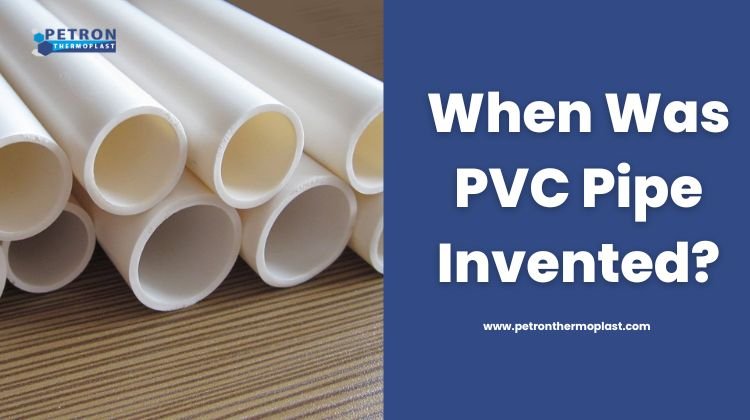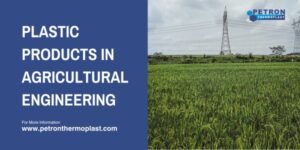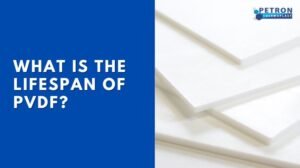Introduction:
PVC (Polyvinyl Chloride) pipes have become an integral part of modern plumbing systems, offering numerous benefits such as durability, versatility, and affordability. However, have you ever wondered when PVC pipe was first invented? In this blog post, we will explore When Was PVC Pipe Invented? and Shed light on the revolutionary invention that has transformed the plumbing industry.
When Was PVC Pipe Invented? | The Origins of PVC
Polyvinyl Chloride (PVC) is a synthetic polymer that has been used in various applications since its discovery in the late 19th century. PVC was first synthesized in 1872 by the German chemist Eugen Baumann, but it was not until the early 20th century that researchers began to explore its potential uses in plumbing.
Early Developments in PVC Pipe Technology
In the 1920s, researchers in Germany and the United States started experimenting with PVC pipes for water and sewer systems. However, the early PVC pipes were not as durable and reliable as their modern counterparts. They were prone to cracking and had limited pressure-bearing capabilities.
It was not until the 1930s that a significant breakthrough occurred in PVC pipe technology. Waldo Semon, an American chemist working for the B.F. Goodrich Company developed a method to plasticize PVC, making it more flexible and easier to work with. This innovation paved the way for the mass production of PVC pipes and revolutionized the plumbing industry.
What is PVC Compound?
PVC compound refers to a versatile material used in various industries, renowned for its exceptional properties and wide range of applications. PVC, short for polyvinyl chloride, is a thermoplastic polymer that is blended with different additives to create a compound with specific characteristics and functionalities.
PVC compounds are commonly utilized in the manufacturing of pipes, cables, automotive parts, flooring, and other consumer products. The compound’s composition may include plasticizers, stabilizers, fillers, pigments, and processing aids, all of which contribute to its overall performance and usability.
This specialized compound exhibits excellent durability, chemical resistance, and flame retardancy, making it a preferred choice in many sectors. It can be formulated to be rigid or flexible, depending on the intended application. For instance, rigid PVC compounds are commonly employed in construction for plumbing and electrical systems, while flexible PVC compounds are used in cable insulation and medical devices.
Due to its widespread usage and importance across various industries, PVC compound remains a significant material in the modern world. Its versatility and ability to be tailored to specific requirements have made it a staple in numerous manufacturing processes and applications.
When Did PVC Plumbing Start?
PVC (polyvinyl chloride) plumbing has been in use for several decades. It was first introduced as a material for plumbing pipes and fittings in the mid-20th century. The development and adoption of PVC pipes gained momentum in the 1950s and 1960s as an alternative to traditional metal and clay pipes.
The advantages of PVC, such as its durability, resistance to corrosion, lightweight nature, and ease of installation, contributed to its popularity in the plumbing industry. It quickly became a preferred choice for various plumbing applications, including residential, commercial, and industrial settings.
Since its introduction, PVC plumbing has continued to evolve and improve. Today, it is one of the most widely used materials for plumbing systems worldwide. It is commonly used for drainage systems, sewer lines, vent pipes, and water supply lines, among other applications.
How PVC Pipe Is Made?
Discover the fascinating process behind the manufacturing of PVC pipes. Read on to gain a deeper understanding of the intricate manufacturing process.
- Raw Materials: PVC pipes are primarily made from polyvinyl chloride (PVC) resin, a synthetic polymer derived from natural gas or petroleum. Other additives, such as plasticizers, stabilizers, and pigments, are also mixed in to enhance the desired properties of the final product.
- Polymerization: To create PVC resin, the monomers derived from natural gas or petroleum are polymerized using specialized catalysts. This process forms long-chain molecules of PVC, which provide the structural strength and flexibility to the pipes.
- Compounding: The PVC resin is combined with various additives in a compounding process. Plasticizers are added to improve flexibility, while stabilizers help maintain the pipe’s integrity over time. Pigments are mixed in to provide the desired color.
- Extrusion: Extrusion is the main method used to shape PVC pipes. The compounded PVC material is fed into an extruder, where it is heated and melted. The molten PVC is then forced through a die, which imparts the desired shape and size to the pipe. Cooling is applied to solidify the pipe as it emerges from the die.
- Cutting and Finishing: Once the pipe is extruded and cooled, it undergoes cutting and finishing processes. High-speed saws or cutters are used to cut the pipes into specific lengths. The cut edges are then smoothed and chamfered to ensure a clean finish.
- Quality Control: Throughout the manufacturing process, rigorous quality control measures are implemented. The pipes undergo inspection for dimensional accuracy, uniformity, strength, and other specified criteria. This ensures that only high-quality PVC pipes reach the market.
The Invention of PVC Diaphragm Valve
While PVC pipes gained popularity for various applications, including water distribution and drainage systems, the invention of the PVC diaphragm valve further expanded their functionality. The diaphragm valve, also known as a pinch valve, is a type of valve that uses a flexible diaphragm to control the flow of fluid.
The PVC diaphragm valve was first developed in the mid-20th century and quickly gained recognition for its versatility and reliability. It found applications in industries such as chemical processing, water treatment, and wastewater management. The valve’s ability to regulate the flow of corrosive fluids made it a preferred choice in environments where metal valves would deteriorate quickly.
Advancements and Widespread Use of PVC Pipes
In the following decades, PVC pipes underwent continuous improvements in terms of durability, strength, and performance. Manufacturers developed new formulations and production methods, resulting in pipes that could withstand higher pressures and temperature variations. These advancements made PVC pipes suitable for a wide range of applications, including residential plumbing, irrigation systems, and industrial processes.
The widespread use of PVC pipes can be attributed to their many advantages. Firstly, PVC pipes are lightweight, making them easier to handle and install. They are also resistant to corrosion, chemicals, and biological agents, ensuring a longer lifespan compared to traditional metal pipes. PVC pipes offer excellent water flow characteristics and are highly cost-effective, making them an ideal choice for plumbing projects.
Benefits of PVC Pipes
PVC pipes offer numerous benefits that have contributed to their popularity in the plumbing industry. Some key advantages include:
- Durability: PVC pipes have a long service life and are resistant to corrosion, making them a reliable option for plumbing systems.
- Versatility: PVC pipes can be easily adapted to various plumbing applications due to their flexibility and compatibility with different fittings.
- Affordability: PVC pipes are cost-effective compared to alternative materials, making them an attractive choice for construction projects.
- Easy Installation: PVC pipes are lightweight and easy to handle, simplifying the installation process and reducing labor costs.
- Low Maintenance: PVC pipes require minimal maintenance, reducing the overall lifetime costs associated with plumbing systems.
Future Innovations and Sustainability of PVC Pipes
As technology advances and sustainability becomes a paramount concern, researchers and manufacturers are continuously exploring ways to improve the sustainability of PVC pipes. Efforts are being made to develop eco-friendly formulations, increase recyclability, and reduce the environmental impact associated with PVC production and disposal.
In recent years, the development of bio-based PVC has shown promise as a more sustainable alternative. Bio-based PVC is produced using renewable resources, such as plant-based feedstocks, reducing dependence on fossil fuels and lowering carbon emissions.
Conclusion
When Was PVC Pipe Invented? In conclusion, PVC pipes have come a long way since their invention in the early 20th century. The development of PVC pipe technology, including the invention of the PVC diaphragm valve, revolutionized plumbing systems and expanded their applications across various industries. With their durability, versatility, and affordability, PVC pipes continue to be a preferred choice for plumbing projects worldwide. As technology and sustainability efforts progress, PVC pipes are likely to evolve further, offering even greater efficiency and environmental benefits.
You may also read – Gear Manufacturer | UHMW Plastic | PEEK Parts





Pingback: steenslag folie
Pingback: Junk search engine
Pingback: FKA Twigs
Pingback: swan168
Pingback: Hormone Screening Test
Pingback: lucabet
Pingback: บาคาร่า ufa11k